50 km west of Urfa, the powerful Hellenistic and Roman fortress is situated on a high spur-like rock plateau in the manner of a narrow peninsula above the western shore of the elongated Birecik reservoir, about 4 km northwest opposite Eski Halfeti, where the valley of the Merzimen Çayı (Barzeman for the Armenians) flows into the Euphrates.
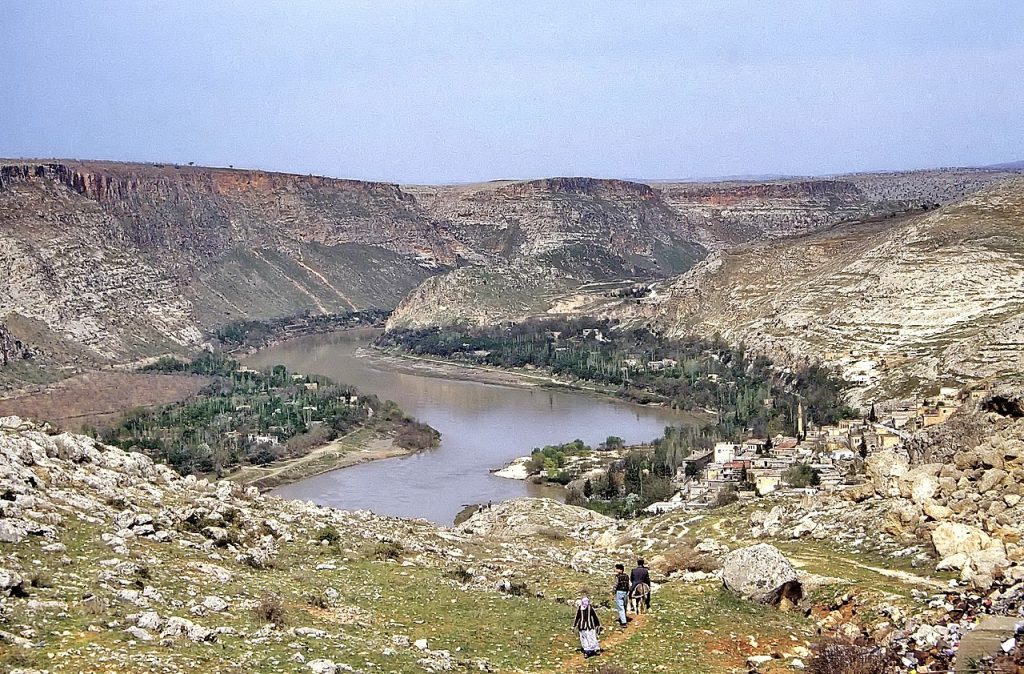
Today the fortress is mostly destroyed and partially flooded. Lower parts of the complex disappeared at the end of the 20th century during the construction of the Birecik reservoir. Buildings or other relics visible in the castle today include St. Nerses Church, Barshavma Monastery, numerous ruins of buildings, water cisterns, wells and ditches, and a historic cemetery. The earliest structure cannot be dated, but the name suggests a Roman or, more likely, Byzantine (Rhomean) predecessor. The oldest preserved structures date from the early 12th century.
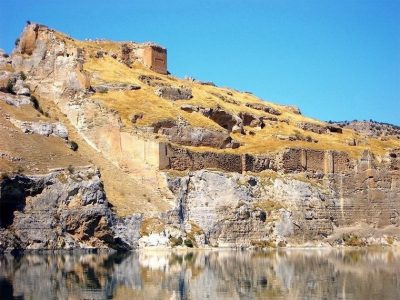
Toponym: Byzantine Fortress
In Greek, Armenian, Syriac (Kalah Rumitha, Kalat ol Rum), Arab and Turkish languages the toponym has the same meaning: Rhomean, i.e. Byzantine fortress. The Latin toponym was Castellum Graceorum (‘Castle of the Greeks’).
Administration
Under Ottoman rule (since 1516), Rumkale was listed as a kaza in the sancak Birecik, which belonged to the province of Aleppo during the Kanuni period (Suleyman I’s sultanate). However, Rumkale was recorded as a separate province in the census records of 1523. In 1536, the administrative unit of Nefs-i Rumkale consisted of four districts named Altuntaş (near Araban), Kızılca, Rumlulu, and Hacıhalil (near Adıyaman). Among these, Rumlulu (Rumkale) district was the busiest central district with 121 households. In 1584, Hacıhalil district was the district with the highest population. The nahiyes associated with the Rumkale district were Merzuman, Ank and Araban. In the 19th century, Rumkale district had five sub-districts: Merzuman, Ank, Araban, Reşi and Baziki.
Population
According to Ottoman statistics, at the end of the 19th century the population of the kaza totaled 22,836 inhabitants, including 22,272 Muslims (10757 women, 11515 men) and 564 Armenian Christians (273 women, 291 men).[1]
According to the Armenian Apostolic Patriarchate of Constantinople, the Armenian pre-war population of the kaza of 1,460 lived primarily in Eneş, Cibin, and Rumkale (the Armenian Hromgla), which had served as the sear of the Armenian Apostolic catholicos between 1151 and 1292. The Armenian community of the kaza maintained three churches and two monasteries.[2]
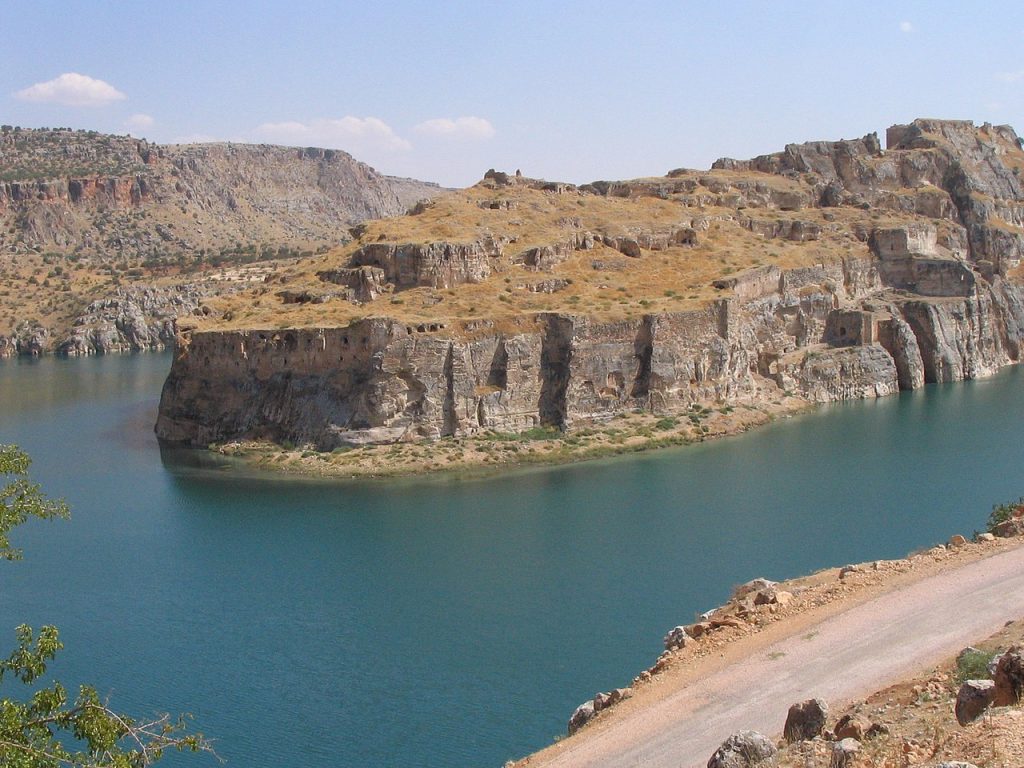
History
The foundation of the city of Rumkale dates back to the Proto-Hittites in 1230 B.C. However, it is also claimed that the city was founded by the Assyrian king Salmanasar in 855 B.C. In the historical process, the city passed into the hands of the Hittites, Assyrians, Medes, Persians, Macedonians, Seleucids and Parthians. According to tradition, John, one of the apostles of Jesus Christ, inhabited Rumkale during the Roman period and made copies of the Bible in a room carved into the rock and kept a copy of the Bible in a cave in Rumkale. Copies are also said to have been brought from there to Beirut, among other places. Therefore, this settlement plays an important role in the history of Christianity.
Urfa and the surrounding area had already been conquered by the Muslims during the reign of Abū Hafs ʿUmar ibn al-Chattāb, the second Islamic caliph (634-644), and thus Rumkale was probably conquered as well. It subsequently passed into the hands of the Umayyads, Abbasids, Seljuks, Zengids, and Ayyubids. However, the Rumkale region did not initially remain under Muslim rule indefinitely, as Armenian domination of the region continued. After the First Crusade (1096-1099), Boudovin (Balduin 1098-1100) de Boulogne removed Islamic rule in Urfa and its environs and established the Crusader County of Edessa (Urfa) in the region in 1098. Balduin II (1100-1118) took Rumkale from the Armenian prince Gog Vasil in 1116 and incorporated it into the Crusader principality of Edessa (Urfa) under the name of ‘Ranculat.’
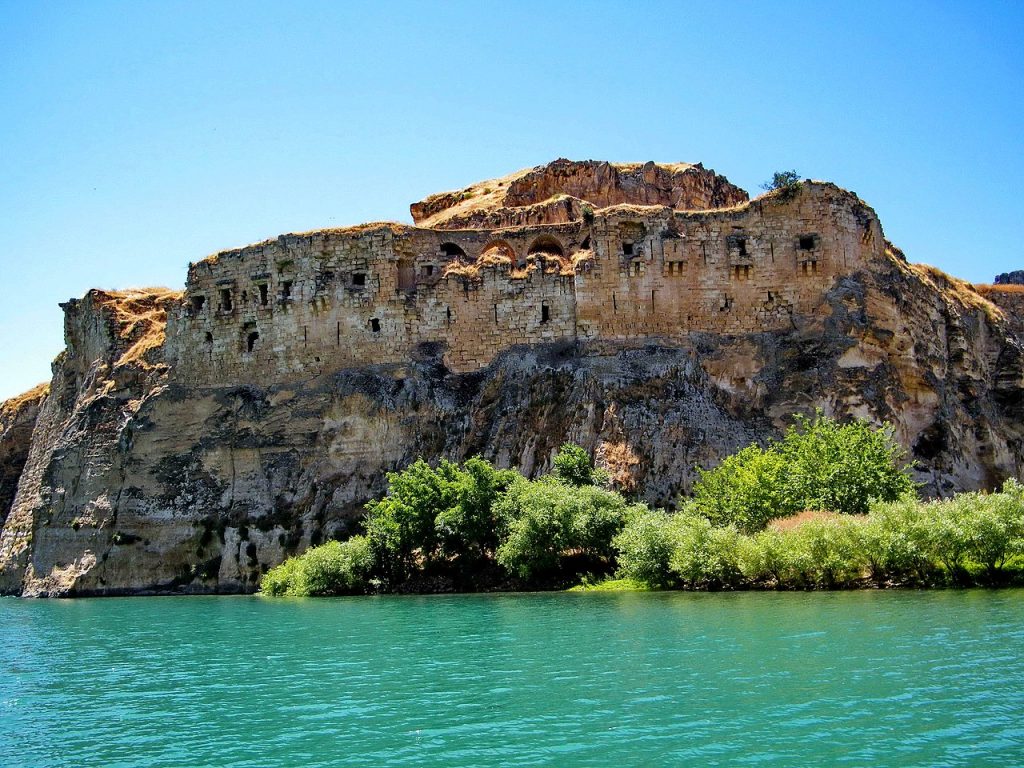
As the seat of the Catholicos of the Armenian Church
Around 1150 Grigor III Pahlavuni, the Catholicos of the Armenian Apostolic Church, moved his official residence from Tzvok to Hromkla at the invitation of Beatrice, wife of the war captive Frank Joscelin II of Edessa. He seems to have bought the Byzantine castle, bypassing the castellan in negotiations with Beatrice. Gregory III bought the town from the then owner, the son of Joscelin, the Count of Edessa.
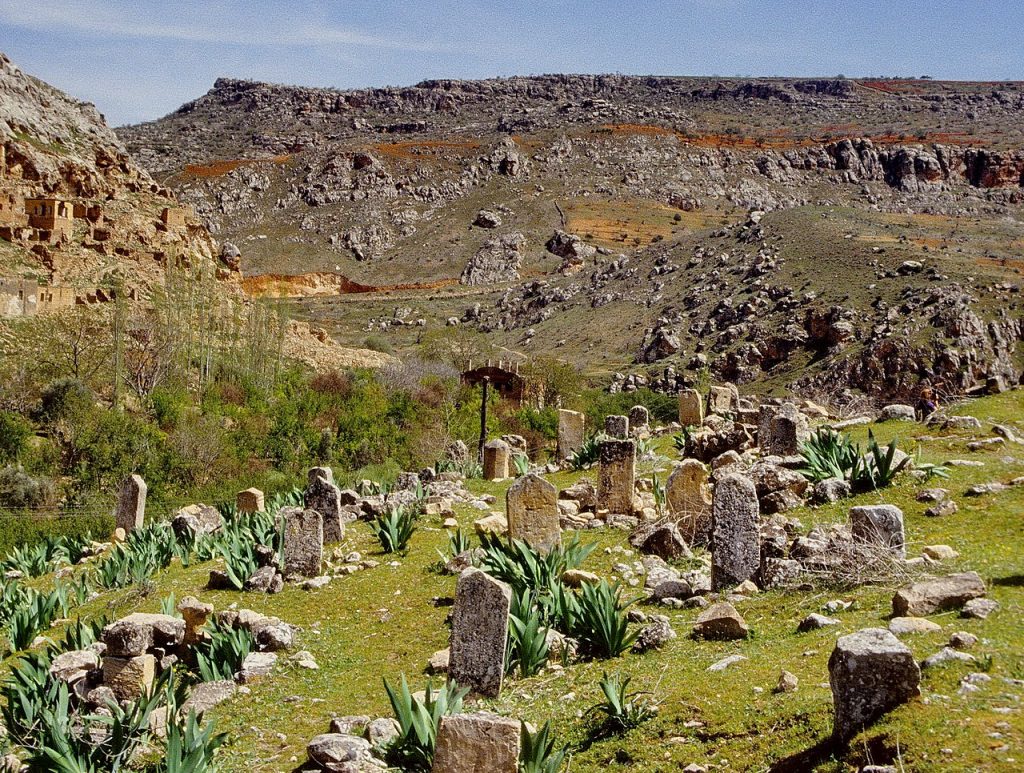
From about 1150 to 1292 Hromkla was the official seat and burial place of the Catholikoi of the Armenians (subsequently Sis in Cilicia) and was equipped with three churches as well as being developed into an almost impregnable fortress. Among others, the famous Catholicos Nerses IV Shnorhali (the Gracious) resided here and found his final resting place. In this period Armenians were the commanders of this castle on the Euphrates, as in the period of the Crusaders, where Bar Grigorios, a son of Basil, is mentioned. A hundred years later, in 1291, Rumkalah was still in the possession of the Armenian kings. In 1179, a council for the unification of the Armenian Church with the Byzantine Church was held in Hromkla. Among the participants were the Catholicos of the Caucasian Albanians and bishops from Greater Armenia, but not the anti-union leaders of the important northern Armenian monasteries of Haghpat and Sanahin.
A frequent guest in Hromkla was the patriarch of the Syriac Orthodox Church from the nearby Barsauma monastery. The Syriac Patriarch Ignatius III David (d. 1252) had the entire library of that monastery transferred to Hromkla, including original manuscripts of the Patriarch Michael I the Great († 1199). After several years of stay in Hromkla, Ignatius David died and was buried there in 1252.
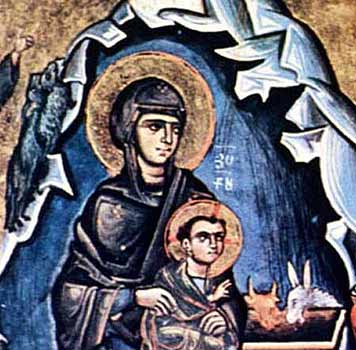
Jerusalem, Armenian Patriarchate Library, No. 251
The most famous Armenian manuscript illuminator Toros Roslin (c. 1210-1270) worked as the head of the Hromkla scriptorium and one of the most famous representatives of the Hromkla school from about 1256 to 1268.
Under Islam
In 1260, the Mongols under Hulagu Khan conquered Rumkale, only 20 years later, on 19 May 1280, the Mamluks under the commanders Beysari and Ayıntablı Hüsameddin with their retinue attempted to take Rumkale. They conquered the city, but not the well-secured castle. After a five-day sack and destruction of the Armenian quarters, Beysari and Ayıntablı Hüsameddin retreated with their armies. In 1292, the Mamluk sultan again prepared to take Rumkale and, together with the governor of Hama, Melik Muzaffer, undertook a campaign against Rumkale. After a hard siege with 33 catapults between 26 May and 29 June 1292, the Mamluk army under Sultan Melik el-Eşref captured the fortress-city. In the process, the Syrian regent Sancar Uca severely destroyed the place due to the siege, however, on the orders of Sultan Melik Eşref, it was rebuilt and named ‘Kal’at el Müslimin’ (Fort of the Muslims). After Hethum of Korykos, the conquerors captured Catholicos Stephen IV, bishops, vardapets, priests as well as many Christians, plundered the church treasury and handed over the bishop’s palace and churches of Hromkla to formerly Christian apostates. Stephen IV was taken to Egypt, where he died after a year of captivity in 1293.
Hromkla remained an important border fortress under the Mamluks, and was even expanded. In the process, the cathedral of the Catholicos was transformed into a mosque, and a bazaar was built. Under Mamluk rule, the site became a refuge for subjects who resisted the Mamluk administration and rulers who rebelled against the sultan. In fact, the rebellious Mamluk commanders Çekem, Nevruz, Devadar Özbek and Demürtaş found refuge in Rumkale after their unsuccessful battles. For this reason, the Mamluk sultans gave greater importance to the border castle of Rumkale and even visited the town themselves. Some of the buildings probably date from this period under the Egyptian sultans. In 1401 Timur Lenk had Rumkalah destroyed. After that, the place apparently fell into disrepair for a long time.
Under Ottoman rule
In 1516 Yavuz Sultan Selim undertook an expedition to the Mamluk state. On the way, he established his headquarters near the Merzuman River (Merzimen Çayı) on the western edge of Rumkale. Yunus Bey, the Mamluk governor of Ayintab (Gaziantep), came to Rumkale and swore allegiance to Yavuz Sultan Selim. On 24 August 1516, after the Ottoman Empire defeated the Mamluks in the Mercidabık War, Rumkale, Ayıntab, Behisni (Besni) and Malatya came under the rule of the Ottoman Empire. Evliya Çelebi noted that Rumkale in the 17th century was a solid castle on a hill, with a mosque, a caravanserai, a hamam and a small bazaar outside, and emphasized the abundance of gardens and fruits.
In Ottoman times, Rumkale continued to serve as a state prison and was later privately owned. At that time, a church in the north was replaced by a palace. In 1832, Rumkale was razed by Ibrahim Pasha and has been left to decay ever since.
Destruction
The Armenians of Eneş, and probably of Cibin and Rumkale as well, was deported in mid-August 1915, after the last men had been liquidated under the direction of the kaymakam, Midhat Bey, who held his post from 22 August 1913 to 24 February 1916.[3]